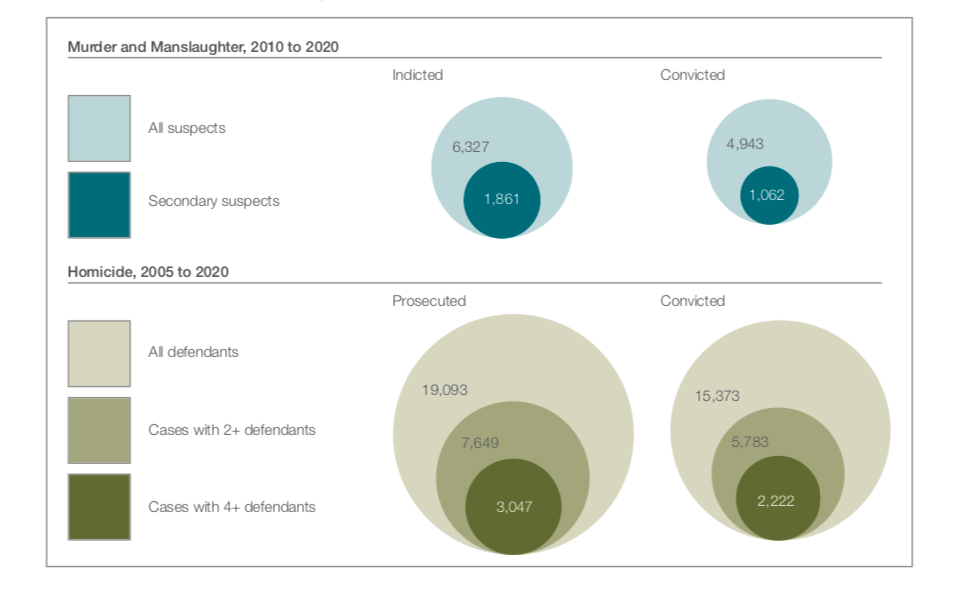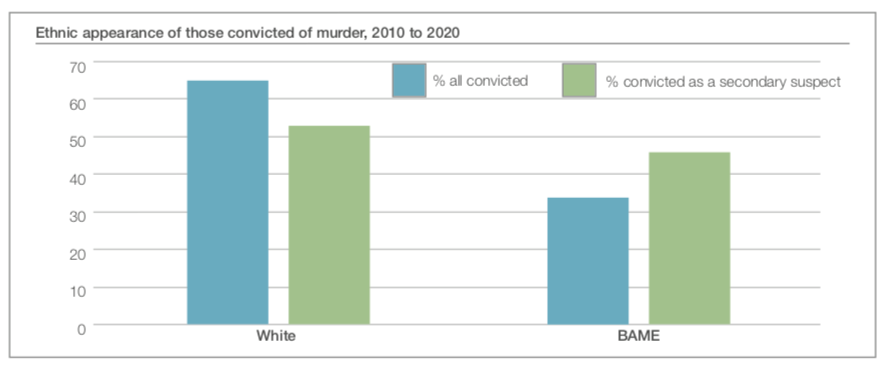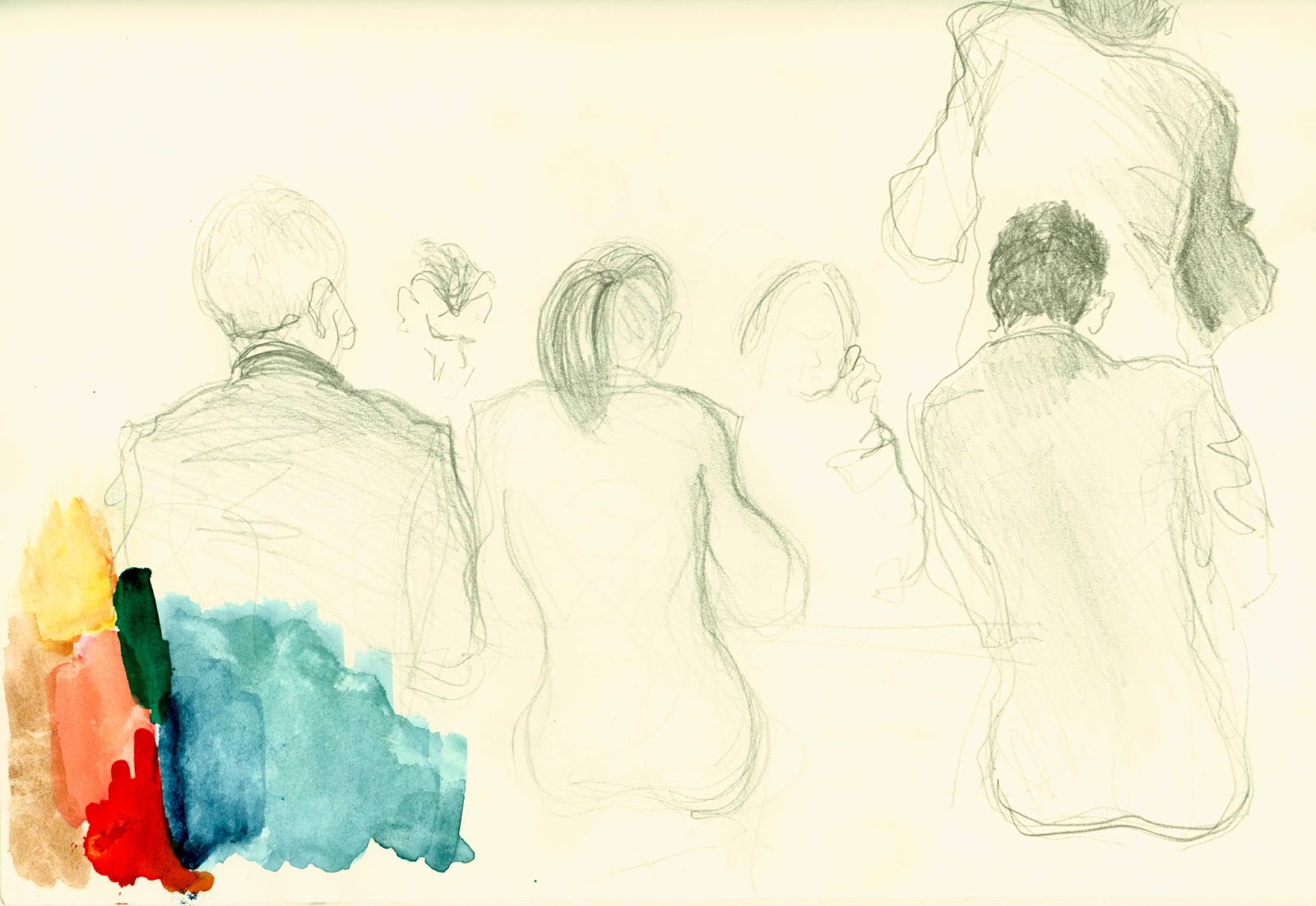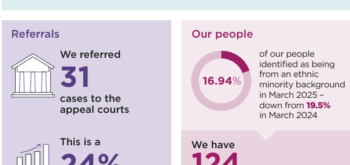There has been ‘no discernible impact’ on the number of prosecutions and convictions under the discredited principle of joint enterprise following a 2016 Supreme Court ruling that the law had taken ‘a wrong turn’ in 1984. As has been reported widely on the Justice Gap, six years ago Lord Neuburger in the Jogee case declared it ‘the responsibility of this court to put the law right’ – data from the Centre for Crime and Justice Studies demonstrates that that has not happened and that young black men have disproportionately borne the brunt of that failure.
- You can read Prof Felicity Gerry on the Justice Gap this week here.
- Also read Fran Robertson and Melanie McFadyean Still Guilty by Association from the most recent issue of Proof magazine.
 However the Centre for Crime and Justice Studies, in partnership with the campaign group JENGbA, report that in three years leading up to the Supreme Court ruling 522 individuals were charged as secondary suspects and there were 296 convictions of secondary suspects; compared to the three years following the ruling where researchers identified 547 individuals charged as secondary suspects and 326 convictions of secondary suspects. ‘There was therefore no discernible impact on the number of prosecutions and convictions,’ the CCJS adds.
However the Centre for Crime and Justice Studies, in partnership with the campaign group JENGbA, report that in three years leading up to the Supreme Court ruling 522 individuals were charged as secondary suspects and there were 296 convictions of secondary suspects; compared to the three years following the ruling where researchers identified 547 individuals charged as secondary suspects and 326 convictions of secondary suspects. ‘There was therefore no discernible impact on the number of prosecutions and convictions,’ the CCJS adds.
The Jogee judgment related to what is known as ‘parasitic accessory liability’ – cases in which two or more people committed a crime, during which one of them committed another crime. Under parasitic accessory liability, the others could be prosecuted as secondary suspects, on the basis that they should have foreseen that the primary suspect would commit another crime. The Supreme Court ruled that this approach had been wrongly applied and, as the CCJS report notes, set ‘far too low a bar’ for people to be convicted of offences they did not perpetrate.
Joint enterprise has long been accused of operating as a ‘dragnet’ disproportionately drawing in young black men into the criminal justice system. According to the report’s authors (Helen Mills, Matt Ford and Roger Grimshaw), ‘a clear profile’ emerges about who has been convicted of serious violent offences through joint enterprise laws. ‘They are predominately young men. Those from minority ethnicity communities, particularly the Black community, are consistently over represented,’ the report’s authors say. ‘Indeed, there are indications that the most recent period has seen some increase in ethnic disproportionality among those convicted under joint enterprise rules.’
Among its recommendations, the report is calling for Crown Prosecution Service to commit to proper data collection – the House of Commons’ Justice committee in a 2012 report criticised the Ministry of Justice for not categorising cases as ‘joint enterprise’ – and to undertake a retrospective review of joint enterprise prosecutions.
‘The Supreme Court ruling could not have simply resolved the well-established injustices of joint enterprise,’ said Helen Mills, the CCJS’s head of programmes. ‘But we were surprised at how consistent the number of prosecutions and convictions secured through joint enterprise were throughout the fifteen-year period we looked at. Before and after the Supreme Court ruling, numbers of prosecutions through joint enterprise laws were remarkably similar, suggesting not much has changed.
Currently there is no official record about the use of joint enterprise. In the absence of better data collection, these figures are our best guide to gauging trends about how this complex and problematic area of law is working. While we did the best we could to establish the most accurate picture, our work also strengthens the argument for greater transparency about this controversial area of prosecution policy.’
Gloria Morrison, cofounder of JENGbA, said that the Supreme Court victory in 2016 ‘vindicated everything JENGbA had said for many years’. ‘This victory was bittersweet because we have found that those convicted under the wrong interpretation of the law now find themselves with the impossible hurdle of the substantial injustice test,’ she added. As reported, there, almost immediately after the Jogee ruling the Court of Appeal effectively drew up the drawbridge denying leave to appeal to 13 defendants in six separate cases.
Jan Cunliffe, cofounder of JENGbA, added that JENGbA campaigners did ‘originally take comfort from the fact that the daily trauma they continued to face, would never happen to another family. However, these findings come as no surprise to us. We receive calls from distressed family members on an almost weekly basis. Their confusion and disappointment in the criminal justice system is a harrowing reminder of the urgent need for Parliamentarians to step in and put right the draconian measures that are continuing to destroying the lives of so many.’
‘Where people sit around the table and they plan an armed robbery, and you’ve got the planner, and he’s got the plans and the clipboard, then you’ve got the driver and the guy with the shotgun, I mean that is either a conspiracy or a joint enterprise or both. I get that. But when you get a 17 year-old in a row with a load of his mates with another ‘gang’ who are equally up for it and somebody on his side punches somebody in the wrong place, or too hard or whatever, and he hasn’t done anything other than be there, just stretch that to joint culpability is what we’re talking about here.’
Lawyer talking about joint enterprise
Key findings
Over a thousand people were convicted of murder or manslaughter as a secondary suspect in the ten year period to 2020. Over two thousand have been convicted of homicide in cases involving four or more defendants in the 15 year period to 2020.

A clear profile emerges about who has been convicted of serious violent offences through joint enterprise laws. They are predominately young men. Those from minority ethnicity communities, particularly the Black community, are consistently over represented.

The Supreme Court verdict had no discernible impact on the numbers of people prosecuted or convicted of serious violence as secondary suspects.

Support the Justice Gap, buy Proof magazine







